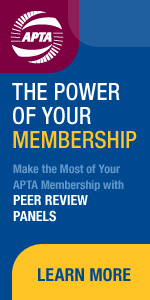

| In This Issue |
| » BREAKING NEWS |
| » NEWS HEADLINES |
| » IN DEPTH: HIGH-SPEED RAIL |
| » COMMENTARY |

Check out the classifieds in this issue to find numerous job opportunities including a General Manager!
| IN DEPTH: HIGH-SPEED RAIL |
High-Speed Rail Presents Challenges, Great Opportunity
BY KATHERINE LEWIS, Special to Passenger Transport
The development of high-speed rail in America will require unprecedented mobilization of the transportation industry, panelists told a recent session during the Transportation Research Board’s 89th Annual Meeting in Washington.
“We’re in a time that is remarkably historic for so many reasons,” said Jolene Molitoris, director of Ohio DOT and former administrator of the Federal Railroad Administration. “We have got to get people involved in a way, to a level, at a breadth and a depth that we really never have done before. … Partnerships not only are possible but are essential.”
High-speed rail holds the potential to safely carry more passengers and freight across America while revitalizing urban downtowns, stimulating economic development, and protecting the environment. It could be the key ingredient in a multi-modal, national transportation system that drives mobility, economic growth, and green choices, Molitoris said.
However, the challenges to implementation of high-speed rail are also monumental, revolving around cost and public opposition, said Ben Strumwasser, principal at Circle Point, a San Francisco communications and environmental planning firm working on California’s high-speed rail project.
“You’re all familiar with the issues that people raise” around rail projects, such as noise, vibration, visual impact, and financial feasibility, Strumwasser said. “They get raised at a louder level than you could ever imagine when you’re dealing with a high-speed rail program, when you’re talking about trains going through communities at 120 miles per hour.”
Nonetheless, forces are aligning to make this an opportune time for high-speed rail in America, beginning with the enthusiasm of President Barack Obama and California Gov. Arnold Schwarzenegger, said Rod Diridon, chair of APTA’s Intercity and High Speed Rail Committee and member/chair emeritus of the California High Speed Rail Authority Board.
of President Barack Obama and California Gov. Arnold Schwarzenegger, said Rod Diridon, chair of APTA’s Intercity and High Speed Rail Committee and member/chair emeritus of the California High Speed Rail Authority Board.
Considering the already-developed high-speed rail networks in Asia and Europe, the U.S. must catch up or be left behind economically. “The gauntlet is down, folks. America had better pick it up,” Diridon said.
High-speed rail is safer, quicker, and costs less per passenger than automobiles or air travel, the only mode of public transportation that actually generates profits rather than requiring a subsidy, he said.
California’s planned 790-mile system already involves 120 consultants and nine separate design-build projects to go out for bid. The system would more than accommodate the doubling of the state’s population expected by 2050, transporting passengers from Los Angeles to San Francisco in just two hours and 38 minutes. It would generate 160,000 construction-related jobs and 450,000 permanent positions.
"This is the largest construction project in the nation’s history,” Diridon said. “It will use all of the high-grade steel in the world for three years.”
High- and higher-speed rail projects could revitalize American manufacturing, Molitoris said, noting that Transportation Secretary Ray LaHood has met with more than 30 rail suppliers committed to establishing or expanding their U.S. facilities. Ohio’s proposed system would connect 60 percent of the state’s population and 220,000 college students, making urban areas on the line more appealing to companies and their workforces.
When facing public opposition or lack of awareness, panelists advised communicating honestly and openly with all stakeholders. “This is not just one-way communication,” Strumwasser said, noting that it’s not enough to tell people an idea is impossible; you have to show why the logistics don’t work.
It’s also important to plan for connectivity to other modes of transportation, such as traditional rail, bus, airports, and commuter rail. “We’re not going to be able to build trains that go nowhere,” Diridon said.
In response to a question about the capacity of the U.S. transportation workforce to implement high-speed rail, Diridon said university programs must focus more on the technical training necessary. “We don’t have people in the United States, with rare exception, that have ever built or operated a high-speed rail system,” he said. “The step between 125 mph and 225 mph is like going into an airplane .… It’s not railroading any more, it’s electronics.”
Many American engineers have experience on systems at high speeds that fall short of bullet trains, Molitoris noted. “Not everybody’s building a 220-mph system,” she said. “Identify the difference and celebrate the difference.”
As he stepped to the podium at the evening session, Diridon asked the audience to raise their fists in the air. “It’s the end of a big day and I want you to believe,” he said. “We’re America!”
“We’re America!” attendees responded.
“What are we going to build?” he asked.
"High-speed rail,” came the answer.
“It’s going to be the best in the world,” Diridon said, to shouts of “Yeah!”
“And it’s going to happen now,” he concluded.
“Now!” people cheered.
| « Previous Article | Return to Top | Return to Main | Next Article » |
|
||||||
| AMERICAN PUBLIC TRANSPORTATION ASSOCIATION |
Telephone (202) 496-4800 • Fax (202) 496-4321
Search Back Issues